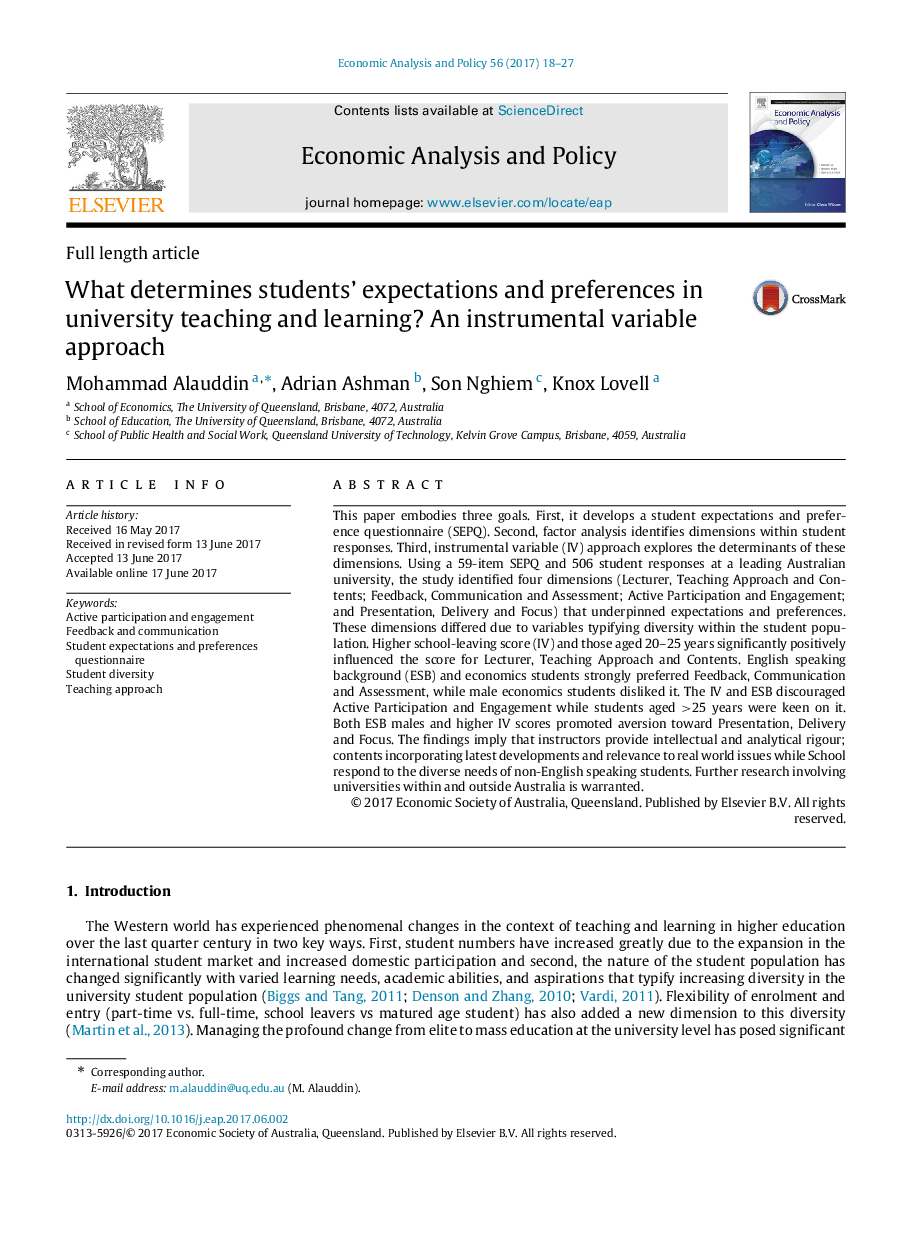| Article ID | Journal | Published Year | Pages | File Type |
|---|---|---|---|---|
| 5052606 | Economic Analysis and Policy | 2017 | 10 Pages |
This paper embodies three goals. First, it develops a student expectations and preference questionnaire (SEPQ). Second, factor analysis identifies dimensions within student responses. Third, instrumental variable (IV) approach explores the determinants of these dimensions. Using a 59-item SEPQ and 506 student responses at a leading Australian university, the study identified four dimensions (Lecturer, Teaching Approach and Contents; Feedback, Communication and Assessment; Active Participation and Engagement; and Presentation, Delivery and Focus) that underpinned expectations and preferences. These dimensions differed due to variables typifying diversity within the student population. Higher school-leaving score (IV) and those aged 20-25 years significantly positively influenced the score for Lecturer, Teaching Approach and Contents. English speaking background (ESB) and economics students strongly preferred Feedback, Communication and Assessment, while male economics students disliked it. The IV and ESB discouraged Active Participation and Engagement while students aged >25 years were keen on it. Both ESB males and higher IV scores promoted aversion toward Presentation, Delivery and Focus. The findings imply that instructors provide intellectual and analytical rigour; contents incorporating latest developments and relevance to real world issues while School respond to the diverse needs of non-English speaking students. Further research involving universities within and outside Australia is warranted.
